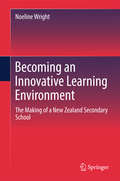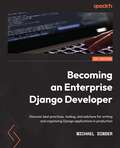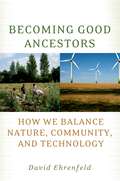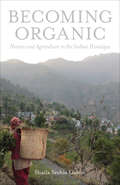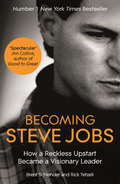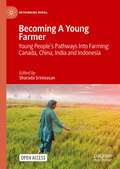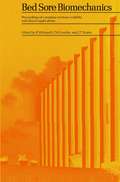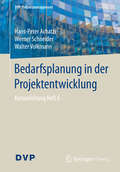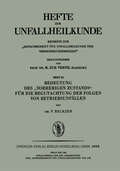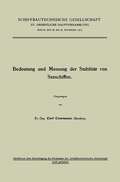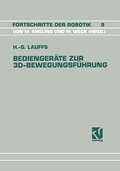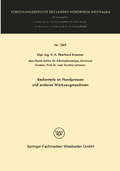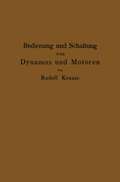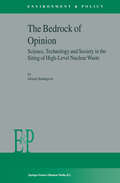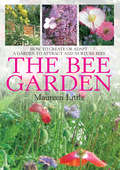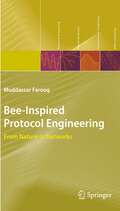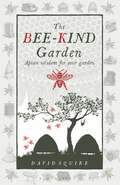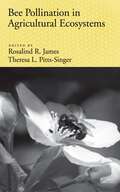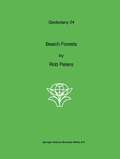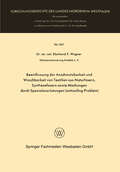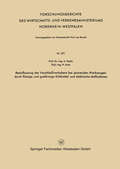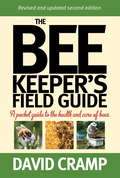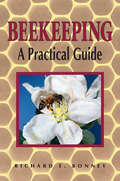- Table View
- List View
Becoming an Innovative Learning Environment: The Making of a New Zealand Secondary School
by Noeline WrightThis book traces how a new school, physically designed as a modern learning environment, has come into being in New Zealand. A key feature is how it designs its curriculum for future citizens. The book explores how flexible curriculum and assessment options support the provision of a well-balanced, coherent and future-oriented learning programme. It also illustrates how the school is implementing its vision and copes with being different from other schools which understand and embody the New Zealand Curriculum as well as the NCEA qualifications system in more traditional terms. School leaders’, teachers’ and foundation students’ thinking and perspectives about what it’s like to become a new school are highlighted and shed light on what is possible within an evolving education system.
Becoming An Enterprise Django Developer: Discover Best Practices, Tooling, And Solutions For Writing And Organizing Django Applications In Production
by Michael DinderDiscover best practices, tooling, and solutions for writing and organizing Django applications in production
Becoming Good Ancestors: How We Balance Nature, Community, and Technology
by David EhrenfeldA brilliant writer and gifted "big picture" thinker, David Ehrenfeld is one of America's leading conservation biologists. Becoming Good Ancestors unites in a single, up-to-date framework pieces written over two decades, spanning politics, ecology, and culture, and illuminating the forces in modern society that thwart our efforts to solve today's hard questions about society and the environment. The book focuses on our present-day retreat from reality, our alienation from nature, our unthinking acceptance of new technology and rejection of the old, the loss of our ability to discriminate between events we can control and those we cannot, the denial of non-economic values, and the decline of local communities. If we are aware of what we are losing and why we are losing it, the author notes, all of these patterns are reversible. Through down-to-earth examples, ranging from a family canoe trip in the wilderness to the novels of Jane Austen to Chinese turtle and tiger farms, Ehrenfeld shows how we can use what we learn to move ourselves and our society towards a more stable, less frantic, and far more satisfying life, a life in which we are no longer compelled to damage ourselves and our environment, in which our children have a future, and in which fewer species are endangered and more rivers run clean. In the final chapter, he offers a dramatic view of the possibilities inherent in a fusion of the best elements of conservatism and liberalism. Our society has an inherent sense of what is right, says Ehrenfeld, and the creativity and persistence to make good things happen. It is now time to apply our intelligence, guided by our moral judgment, to the very large problems we all face. This book is an important first step.
Becoming Organic: Nature and Agriculture in the Indian Himalaya (Yale Agrarian Studies Series)
by Shaila Seshia GalvinA rich, original study of the social and bureaucratic life of organic quality that challenges assumptions of what organic means Tracing the social and bureaucratic life of organic quality, this book yields new understandings of this fraught concept. Shaila Seshia Galvin examines certified organic agriculture in India’s central Himalayas, revealing how organic is less a material property of land or its produce than a quality produced in discursive, regulatory, and affective registers. Becoming Organic is a nuanced account of development practice in rural India, as it has unfolded through complex relationships forged among state authorities, private corporations, and new agrarian intermediaries.
Becoming Steve Jobs: The evolution of a reckless upstart into a visionary leader
by Brent Schlender Rick TetzeliTHE SUNDAY TIMES AND #1 INTERNATIONAL BESTSELLER - with a new foreword by Silicon Valley legend Marc Andreessen.'For my money, a better book about Jobs than Walter Isaacson's biography' New Yorker'A fascinating reinterpretation of the Steve Jobs story' Sunday TimesWe all think we know who Steve Jobs was, what made him tick, and what made him succeed. Yet the single most important question about him has never been answered. The young, impulsive, egotistical genius was ousted in the mid-80s from the company he founded, exiled from his own kingdom and cast into the wilderness. Yet he returned a decade later to transform the ailing Apple into the most successful company the world had ever seen. How did this reckless upstart transform himself into a visionary business leader? The first comprehensive study of Jobs' career following his dismissal from Apple, written with unparalleled access and insight, BECOMING STEVE JOBS offers a startling new portrait of the most important business figure in modern history. The most intimate biography yet of Jobs, written by the journalist who knew him better than any other, BECOMING STEVE JOBS draws on recently discovered interviews that have never before seen the light of day, and answers for the first time the most pressing questions about what made this legendary business leader such a success.'Brent Schlender and Rick Tetzeli render a spectacular service with this book, giving fresh perspective onSteve Jobs' journey from inspiring but immature entrepreneur into an inspired and mature company-builder. Most important, they capture Jobs' resilience, his refusal to capitulate, his restless drive to stay in the game, his voracious appetite to learn-this, far more than genius, is what made him great.Becoming Steve Jobs gets the focus precisely right: not as a success story, but as a growth story. Riveting, insightful, uplifting-read it and learn!' Jim Collins, author of Good to Great'BECOMING STEVE JOBS is fantastic. After working with Steve for over 25 years, I feel this book captures with great insight the growth and complexity of a truly extraordinary person. I hope that it will be recognized as the definitive history.' Ed Catmull, President, Pixar and Disney Animation
Becoming A Young Farmer: Young People’s Pathways Into Farming: Canada, China, India and Indonesia (Rethinking Rural)
by Sharada SrinivasanThis open access book is based on a multi-country collaborative research project focussing on Canada, China, India, and Indonesia.It responds directly and concretely to concerns about the generational sustainability of smallholder farming worldwide– reflected in the current UN Decade of Family Farming. Drawing on research that asks how (some) young people continue to pursue a (future) livelihood in farming, the book uses the life-course perspective and privileges voices of young farmers to show that movement away from farming such as time spent in education, migration and non-farm work does not exclude eventual farming futures.The book will be of interest to scholars and students of agrarian studies, anthropology, development studies, gender studies, human geography, rural sociology, and youth studies.
Bedarfsgerechte Aktuierung eines CVT-Getriebes (Wissenschaftliche Reihe Fahrzeugtechnik Universität Stuttgart)
by Peter MuschPeter Musch stellt zwei verschiedene Konzepte zur bedarfsgerechten Aktuierung von CVT-Getrieben vor. Dabei werden verschiedene Betriebsstrategien der Konzepte und ihr Einfluss auf den Getriebewirkungsgrad mittels validierten Simulationsmodellen untersucht. Auslegung und Konstruktion der einzelnen Komponenten werden detailliert beschrieben und Ergebnisse der Prüfstandsversuche vorgestellt. Die Reduzierung der Aktuierungsenergie kann durch den verbesserten Wirkungsgrad so einen signifikanten Beitrag zum verminderten Flottenverbrauch leisten. Zudem ermöglichen die Konzepte die Realisierung von Hybridfunktionen wie Stopp-Start und Segel.
Bedarfsplanung in der Projektentwicklung: Kurzanleitung Heft 6 (DVP Projektmanagement)
by Hans-Peter Achatzi Werner Schneider Walter VolkmannDas Buch ist ein kompakter Leitfaden zur schrittweisen Erarbeitung der Bedarfsplanung von Hochbauaufgaben. Großprojekte stehen durch Budget- und Terminüberschreitungen zu Recht in der Kritik der Öffentlichkeit. Doch sie sind nur die Spitze des Eisbergs. Auch bei weniger spektakulären Projekten werden Ziele immer wieder verfehlt. Oft werden sie teurer, später fertig und erreichen nicht die erwartete Qualität. Die Fachwelt ist sich einig, dass die entscheidenden Fehler in der ersten Phase eines Projektes gemacht werden, und zwar in der Erarbeitung und Abstimmung der qualitativen und quantitativen Anforderungen. Auch die vom Bundesministerium für Verkehr und digitale Infrastruktur einberufene „Reformkommission Bau von Großprojekten“ hebt die Bedeutung der ersten Schritte in einem Bauprojekt hervor.
Bedeutung der physikalischen und chemischen Eigenschaften von SM-Schlacke für eine Verwendung im Straßenbau (Forschungsberichte des Landes Nordrhein-Westfalen)
by Hans-Ernst SchwieteBedeutung des „Vorherigen Zustands“ für die Begutachtung der Folgen von Betriebsunfällen (Hefte zur Unfallheilkunde)
by P. ReckzehDieser Buchtitel ist Teil des Digitalisierungsprojekts Springer Book Archives mit Publikationen, die seit den Anfängen des Verlags von 1842 erschienen sind. Der Verlag stellt mit diesem Archiv Quellen für die historische wie auch die disziplingeschichtliche Forschung zur Verfügung, die jeweils im historischen Kontext betrachtet werden müssen. Dieser Titel erschien in der Zeit vor 1945 und wird daher in seiner zeittypischen politisch-ideologischen Ausrichtung vom Verlag nicht beworben.
Bedeutung und Messung der Stabilität von Seeschiffen
by Carl CommentzDieser Buchtitel ist Teil des Digitalisierungsprojekts Springer Book Archives mit Publikationen, die seit den Anfängen des Verlags von 1842 erschienen sind. Der Verlag stellt mit diesem Archiv Quellen für die historische wie auch die disziplingeschichtliche Forschung zur Verfügung, die jeweils im historischen Kontext betrachtet werden müssen. Dieser Titel erschien in der Zeit vor 1945 und wird daher in seiner zeittypischen politisch-ideologischen Ausrichtung vom Verlag nicht beworben.
Bediengeräte zur 3D-Bewegungsführung: Ein Beitrag zur effizienten Roboterprogrammierung (Fortschritte der Robotik #9)
by Hans-Georg LauffsBedienteile an Handpressen und anderen Werkzeugmaschinen (Forschungsberichte des Landes Nordrhein-Westfalen #1269)
by Henning WodeÜber die zweckmäßige Art und günstige räumliche Anordnung von Bedienteilen - wie Handräder, Kurbeln und Hebel-gibt es eine umfangreiche Literatur. Sie ist jedoch fast ausnahmslos beschränkt auf folgende Anwendungsfälle : 1. a) Einstellen eines mit dem Bedienteil gekoppelten Zeigers auf eine gewünschte Lage. b) Nachfahren einer sich bewegenden Marke mit einem Zeiger, der mit dem Bedienteil gekoppelt ist. c) Fälle a) und b) jeweils bei einer Teil- oder vollen Umdrehung oder bei meh reren Umdrehungen des Bedienteils ; bei unterschiedlichen Drehwider ständen. 2. a) Einleitung eines möglichst großen Energiebetrages in das Bedienteil bei einer Umdrehung oder mehreren aufeinanderfolgenden Umdrehungen des Bedienteiles. b) Einleiten eines möglichst großen statischen Drehmomentes oder einer mög lichst großen Kraft in das ganz oder nahezu feststehende Bedienteil. Anscheinend fehlen aber noch Untersuchungen über die zweckmäßige Art und Lage von Bedienteilen, an denen vom Menschen Arbeit geleistet werden soll, in 0 dem er sie um weniger als 360 wiederholt gegen einen Arbeitswiderstand hin bewegt und unbelastet zurückbewegt. Da solche Arbeitsbedingungen in der Praxis häufig vorkommen - wie u. a. in diesem Bericht nachgewiesen wird -, ist eine Untersuchung hierüber angebracht. Um Klarheit für den folgenden Bericht zu schaffen, müssen zunächst einige De finitionen gegeben werden: »Handpresse« ist eine Presse, deren für den Arbeitsvorgang notwendige Energie vom Menschen über seine Hand in sie eingeleitet wird. Die Energiezufuhr durch den Menschen erfolgt über das »Bedienteil« : »Bedienteil« ist das Bauteil, über das ein Mensch auf eine Vorrichtung die für die Arbeitsaufgabe nötige Energie überträgt.
Bedienung und Schaltung von Dynamos und Motoren sowie für kleine Anlagen ohne und mit Akkumulatoren
by Rudolf KrauseThe Bedrock of Opinion: Science, Technology and Society in the Siting of High-Level Nuclear Waste (Environment & Policy #32)
by G. SundqvistWhen did man discover nuclear waste? To answer this question, we first have to ask if nuclear waste really is something that could be called a scientific discovery, such as might deserve a Nobel Prize in physics. In early writings within nuclear energy research radioactive waste appears to be a neglected issue, a story never told. Nuclear waste first seems to appear when a public debate arose about public health risks of nuclear power in the late 1960s and early 70s. In nuclear physics, consensus was established at an early stage about the understanding of the splitting of uranium nuclei. The fission products were identified and their chains of disintegration and radioactivity soon were well established facts among the involved scientists, as was an awareness of the risks, for example the strong radioactivity of strontium and iodine, and the poisonous effects of plutonium. However, the by-products were never, either in part or in total, called or perceived as waste, just as fission by-products. How and where to dispose of the by-products were questions that were never asked by the pioneers of nuclear physics.
The Bee Garden: How to Create or Adapt a Garden to Attract and Nurture Bees
by Maureen LittleBees play a vital and irreplaceable role in pollinating our flowers, fruits and vegetables. The more bees in your garden the healthier, more productive and more pleasant a place it will be. Yet bees are declining rapidly and many people, even if they do not wish to keep bees themselves, are asking what can be done on an individual basis to help the bee. This book is a response to that request. It will demonstrate in one accessible volume how each of us can play our part in providing a bee-friendly environment, no matter how much gardening space and/or time we may have. It includes: * How bees forage, what bees you can expect to find in your garden and what plants are best for them. * Why honey bees are so important; what they need to thrive and how they detect and access those requirements; and what varieties of plants are best suited to provide those needs. * How the gardener can offer and maintain a bee-friendly garden, followed by a season-by-season account of what beefriendly plants are in flower and when, and what jobs the gardener can be doing during these times to help bees thrive. * A gazetteer of selected bee-friendly plants, arranged by type of plant in seasonal sub-sections. * Illustrative, practical planting plans, including a culinary herb garden, a potager, a wild flower garden, and a 3 seasons traditional border.
Bee-Inspired Protocol Engineering: From Nature to Networks (Natural Computing Series)
by Muddassar FarooqHoney bee colonies demonstrate robust adaptive efficient agent-based communications and task allocations without centralized controls – desirable features in network design. This book introduces a multipath routing algorithm for packet-switched telecommunication networks based on techniques observed in bee colonies. The algorithm, BeeHive, is dynamic, simple, efficient, robust and flexible, and it represents an important step towards intelligent networks that optimally manage resources. The author guides the reader in a survey of nature-inspired routing protocols and communication techniques observed in insect colonies. He then offers the design of a scalable framework for nature-inspired routing algorithms, and he examines a practical application using real networks of Linux routers. He also utilizes formal techniques to analytically model the performance of nature-inspired routing algorithms. In the last chapters of the book, he introduces an immune-inspired security framework for nature-inspired algorithms, and uses the wisdom of the hive for routing in ad hoc and sensor networks. Finally, the author provides a comprehensive bibliography to serve as a reference for nature-inspired solutions to networking problems. This book bridges the gap between natural computing and computer networking. What sets this book apart from other texts on this subject is its natural engineering approach in which the challenges and objectives of a real-world system are identified before its solution, nature-inspired or otherwise, is discussed. This balanced exposition of the book makes it equally suitable for telecommunication network designers and theorists, and computer science researchers engaged with artificial intelligence, agents, and nature-inspired techniques.
The Bee-Kind Garden: Apian wisdom for your garden (Wise Words #1)
by David SquireThe lives of bees are interwoven with our own, but how much do you know about them?Which scents do bees prefer? How do bees transport pollen? How far can bees fly? Do specific colours attract bees? Do bees prefer native flowers? Bees are a delight to see in the garden on warm summer days, buzzing as they flit from flower to flower. They are also vital for the future of the planet and without their dedicated pollinating skills, many crops would eventually fail. Then there is honey – a near-miraculous elixir that in earlier generations was an integral part of life as a sweetener and food preserver. It can be fermented with water and yeast to create mead, a drink that has been enjoyed for thousands of years. The Bee-Kind Garden reveals the many facets of the lives of bees, including their hives, flight patterns and defence. It is filled with helpful information on important topics such as which flowers are best for attracting bees to your garden, beekeeping equipment and guidance for extracting honey as well as the art of talking to bees. It also celebrates the charming proverbs, limericks and verse bees have inspired.This delightfully illustrated book is a homage to bees and to ensuring that they continue to live in harmony with humans in bee-friendly gardens.
Bee Pollination in Agricultural Ecosystems
by Rosalind James Theresa L. Pitts-SingerFor many agricultural crops, bees play a vital role as pollinators, and this book discusses the interplay among bees, agriculture, and the environment. Although honey bees are well recognized as pollinators, managed bumble bees and solitary bees are also critical for the successful pollination of certain crops, while wild bees provide a free service. As bees liberally pass pollen from one plant to the next, they also impact the broader ecosystem, and not always to the benefit of humankind. Bees can enhance the unintentional spread of genes from genetically engineered plants, and may increase the spread of invasive weeds. Conversely, genetically engineered plants can impact pollinators, and invasive weeds can supply new sources of food for these insects. Bees' flower-visiting activities also can be exploited to help spread biological control agents that control crop pests, and they are important for native plant reproduction. Managing bees for pollination is complex and the factors that must be taken into consideration are treated here, including bee natural history, physiology, pathology, and behavior. Furthermore, transporting bees from native ranges to new areas for pollination services can be controversial, and needs to be done only after assuring that it will not disrupt various ecosystems. Even though bees are small, unobtrusive creatures, they play large roles in the ecosystem. The connection between bees and humankind also is symbolic of a broader interconnection between humans and the natural world.
Beeinflussung der Anschmutzbarkeit und Waschbarkeit von Textilien aus Naturfasern, Synthesefasern sowie Mischungen durch Spezialausrüstungen (Forschungsberichte des Landes Nordrhein-Westfalen #1411)
by Eberhard Frithjof WagnerBeeinflussung des Verschleißverhaltens bei spanenden Werkzeugen durch flüssige und gasförmige Kühlmittel und elektrische Maßnahmen (Forschungsberichte des Wirtschafts- und Verkehrsministeriums Nordrhein-Westfalen #271)
by Herwart OpitzThe Beekeeper's Field Guide: A Pocket Guide to the Health and Care of Bees
by David CrampThis guide is a diagnostic tool and an aide memoire for the hobbyist and for the professional beekeeper, who may know what to do but will at times need the information close to hand. It includes: - A troubleshooting guide to problems with colonies and queen bees - A guide to the field diagnosis, treatment and control of diseases - Seasonal apiary management checklists - Hive product harvesting checklists - The beekeeper's ready reckoner The second and revised edition of this fully illustrated and handy guide to the apiary brings the science and craft of beekeeping to beekeepers right where they need it - in the field with the bees.Contents: Preface; List of figures; List of photographs; List of tables; Picture credits; Introduction; Part A: Setting up an Apiary; Part B: Crops, Trees and Plants for Bees; Part C: Troubleshooting Guide to Field Operations; Part D: Swarm Prevention and Control; Part E: Queen Bees; Part F: Honey Harvest Procedures; Part G: Hive Checks; Part H: Pests and Diseases; Part I: A Beekeeper's Ready-reckoner; Part J.
Beekeeping: A Practical Guide
by Richard E. BonneyKeep your own bees and enjoy delicious golden honey from your own backyard. With his respect and admiration for bees evident on every page, Richard E. Bonney describes how to acquire bees, manage a hive, prevent and treat diseases, and extract a crop of honey. Enthusiastic beekeepers of every stripe and experience level will benefit from Bonney&’s astonishing knowledge of the craft — from beekeeping history and honeybee biology to the complex social structure of the hive.
